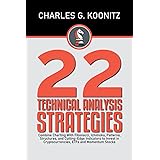Imagine a world where your financial future isn’t just a distant hope but a tangible asset you control, growing steadily despite global economic uncertainties. For many, that vision is becoming a reality through Bitcoin. When it first launched in 2009, its value was a mere fraction of a cent. Yet, this digital pioneer has surged past $100,000, cementing its status as the best-performing asset in history. This remarkable ascent isn’t just a fluke; it’s a testament to its fundamental strengths and the ongoing devaluation of traditional fiat currencies through persistent money printing by central banks. Consequently, a growing number of investors are looking to buy Bitcoin safely to safeguard their purchasing power and secure their financial future.
However, as the video above eloquently highlights, the journey to acquiring BTC is often easier said than done. Navigating the world of cryptocurrencies can feel like deciphering a complex code, where one wrong step could lead to significant losses. This isn’t just about saving money; it’s about optimizing your investment to acquire more of this scarce digital asset. Our aim today is to demystify the process, building upon the excellent foundation laid in the video. We’ll delve deeper into what Bitcoin truly is, provide a meticulous step-by-step guide on how to buy Bitcoin’s BTC coin, and equip you with advanced strategies to maximize your returns and secure your digital wealth.
Understanding Bitcoin (BTC): Beyond the Buzzwords
Before you embark on your journey to buy Bitcoin safely, it’s crucial to grasp the nuances of its terminology. The video introduces a distinction that many newcomers overlook: the difference between Bitcoin (with a capital B), bitcoin (with a lowercase b), and the ticker symbol BTC.
Bitcoin (Capital B): The Network, The Protocol
When we refer to Bitcoin with a capital ‘B,’ we’re talking about the overarching protocol, the entire payment network, and the groundbreaking technology itself. Think of it as the internet: a vast, decentralized system rather than a single website. This Bitcoin network is powered by a distributed database known as a blockchain, secured by hundreds of thousands of “miners” globally. These miners, equipped with specialized hardware, engage in a continuous computational race to process transactions and update the network’s ledger. This process, termed Proof-of-Work, groups transaction data into “blocks,” which are then cryptographically linked to form a chain. This “blockchain” architecture is what makes Bitcoin the most secure digital payment system in existence, resilient against manipulation and censorship.
bitcoin (Lowercase b) and BTC: The Digital Currency
On the other hand, ‘bitcoin’ with a lowercase ‘b’ refers to the actual cryptocurrency unit that circulates on the Bitcoin network. Much like the U.S. Dollar is known by its USD ticker, the Bitcoin currency is universally recognized by the ticker symbol BTC. Miners are rewarded in BTC for their efforts in securing the network, and it is this digital asset that investors seek to acquire. From this point forward, like the video, we will primarily use BTC to refer to the cryptocurrency itself to ensure clarity.
What Gives Bitcoin Value? The Pillars of BTC’s Enduring Strength
The inherent value of BTC isn’t derived from government decree or physical backing. Instead, its strength stems from a unique confluence of technological innovation, economic principles, and philosophical ideals.
Unrivaled Security and Decentralization
As touched upon, the Bitcoin blockchain stands as arguably the most secure network globally. Its decentralized nature means no single entity controls it; instead, it’s maintained by a global network of participants. This eliminates single points of failure and makes it virtually impossible to shut down or compromise. This unparalleled security directly translates to BTC being the most secure digital asset for wealth storage, attracting investors seeking a robust hedge against systemic risks.
Fundamental Supply and Demand Dynamics
One of the most powerful drivers of BTC’s value lies in its predetermined, finite supply. Unlike fiat currencies, which can be printed endlessly, there will only ever be a maximum of 21 million BTC in existence. This scarcity is further reinforced by a programmatic event known as the “halving,” which occurs approximately every four years. During a halving, the reward miners receive for processing a block is cut in half, drastically reducing the rate at which new BTC enters circulation. Historically, each halving event has been followed by significant price appreciation due to the reduced supply meeting consistent or increased demand, often leading to parabolic growth fueled by speculation and wider adoption.
Financial Sovereignty and Control
Perhaps the most profound reason for BTC’s enduring value is the financial freedom it offers. In a traditional banking system, the money you “store” in a bank is not entirely yours; it’s a liability the bank owes you. This fundamental dynamic is becoming increasingly relevant with the rise of Central Bank Digital Currencies (CBDCs), which could grant governments unprecedented control over individual finances. In stark contrast, when you hold BTC in your own non-custodial wallet, you maintain complete and immutable control over your funds. This represents a return to true financial autonomy, a principle many believe is essential for individual liberty in the digital age. This control is a powerful incentive for those looking to protect their wealth from potential governmental overreach or financial instability.
Direct vs. Indirect Bitcoin Ownership: Choosing Your Path
When considering how to buy Bitcoin safely, you essentially have two primary avenues:
Direct Ownership via Crypto Exchanges
This method involves purchasing BTC directly through a cryptocurrency exchange and, ideally, withdrawing it to your personal crypto wallet. Direct ownership offers the significant advantage of self-custody, meaning you truly own and control your BTC. This path aligns with the core philosophy of Bitcoin – financial independence. However, it does place the responsibility of security entirely on you, requiring careful attention to wallet management and private key protection.
Indirect Exposure through Traditional Markets
For some, direct ownership might be challenging due to local regulations or a lack of comfort with self-custody. In these cases, indirect exposure through traditional financial platforms can be an alternative. Many banks and brokers now offer spot Bitcoin ETFs (Exchange-Traded Funds) or similar products. These products allow you to gain exposure to BTC’s price movements without actually holding the underlying asset. The key drawback here is that these are custodial assets; you don’t own the actual BTC. Furthermore, traditional markets operate within specific business hours, which means the price of an ETF tracking BTC can sometimes deviate from the underlying crypto’s 24/7 market price, leading to potential tracking errors. Generally, for those prioritizing financial sovereignty and full control, buying and holding BTC directly remains the superior choice.
Step-by-Step: How to Buy BTC on a Reputable Crypto Exchange
The video points to Binance as a leading choice, and for good reason. As the world’s largest crypto exchange, serving over 270 million users in more than 170 countries, Binance offers robust security measures like advanced data analytics for transaction monitoring and a substantial portion of user funds held in offline cold storage. Moreover, its SAFU insurance fund provides an additional layer of protection, designed to reimburse users in the event of a security breach. While the video focuses on Binance, the principles for setting up an account and purchasing BTC are largely applicable to other reputable exchanges.
1. Securely Download the Official App
The very first step is paramount: ensure you download the legitimate application. Scammers frequently create malicious apps or websites that closely mimic official platforms. Always use direct links from official sources, such as those provided in the video’s description or verified on the exchange’s main website. For Binance, select the Android or iOS option relevant to your device and proceed with the installation.
2. Account Setup and Configuration
Upon opening the app, you’ll be greeted with options to configure your experience. A pro tip: even if you’re new to crypto, select the “I’m familiar with crypto” option on Binance. This immediately grants you access to the full suite of features and aligns your interface with most online guides, all without any extra cost.
Next, proceed to “Sign Up With Email or Phone.” We strongly recommend using a dedicated email address rather than linking via Google or Apple. This creates a necessary layer of separation, mitigating risks should your primary accounts be compromised. After entering your email, agree to the terms and conditions, and verify your email with the received code.
3. Create a Strong, Unique Password
Security is paramount. Your password should be a fortress: at least 14 characters, incorporating a mix of uppercase and lowercase letters, numbers, and special characters. Avoid reusing passwords or including personal information. Consider using a reputable password generator to create something truly robust and unique for your crypto exchange account.
4. Confirm Jurisdiction and Complete Identity Verification
You’ll need to select your region. Following this, most reputable exchanges, including Binance, will require Identity Verification (KYC – Know Your Customer). This involves submitting official identification documents and often a selfie for facial recognition. While this step may seem intrusive, it’s a standard regulatory requirement designed to prevent fraud and enhance security for all users.
Funding Your Account and Making Your First BTC Purchase
With your account established and verified, you’re ready to fund it and buy Bitcoin’s BTC coin.
1. Add Funds to Your Account
On the main page, locate the “Add Funds” or “Deposit” button. You’ll typically find several options:
- Card or Bank Transfer: The most common and direct method for beginners.
- Peer-to-Peer (P2P) Trading: Allows you to buy crypto directly from other users.
- Receive Crypto: If you already hold crypto elsewhere, you can deposit it.
For this guide, we’ll focus on using a card or bank transfer, as detailed in the video.
2. Specify Currency and Asset
Once you select “Card or Bank Transfer,” you’ll choose your preferred national currency (e.g., USD, EUR, GBP) and the cryptocurrency you wish to purchase. By default, some exchanges might show USDT, but you’ll easily be able to switch this to BTC. Enter the amount of fiat currency you wish to spend.
3. Register Your Payment Method
If you haven’t already, you’ll be prompted to enter your debit or credit card details. Double-check all information for accuracy before confirming.
4. Confirm Your Order
A final confirmation page will display the amount of BTC you’re purchasing, the current price, applicable fees, and the total cost. Review all details carefully. You may also need to authorize the payment through your banking app as an additional security step. Once authorized and processed, you’ll receive a success notification, and your newly acquired BTC will be deposited into your spot wallet on the exchange.
Securing Your Bitcoin: The Critical Next Step
Congratulations, you now own BTC! However, the journey to truly buy Bitcoin safely isn’t complete until you move your assets off the exchange and into your personal control.
Withdrawing to Your Personal Wallet
While exchanges offer convenience, they are still centralized entities and can be targets for hackers. For maximum security, it’s highly recommended to withdraw your BTC to a personal, self-custody wallet. On the exchange, navigate to your Spot Account and look for the “Send” or “Withdraw” option. Select “On-Chain Withdraw” for BTC. You will then need to enter the wallet address of your personal Bitcoin wallet. This step requires extreme caution. Always double-check, and even triple-check, the wallet address. A single incorrect character can result in the permanent loss of your funds. Additionally, ensure the correct network (Bitcoin network for BTC) is selected. Confirm the amount, review all details one last time, and initiate the withdrawal. After a brief processing period, your BTC will officially be under your direct control.
Maximizing Your Bitcoin Gains: Strategic Tips for BTC Investors
Beyond the technical steps of buying BTC, strategic thinking is crucial for optimizing your investment and navigating the dynamic crypto market. These tips are designed to help you not just acquire, but truly thrive with your Bitcoin investment.
1. Optimize for Minimal Fees
Transaction fees can silently erode your returns. When you buy Bitcoin safely, pay close attention to deposit, swap, and withdrawal fees. Reputable exchanges like Binance are known for their competitive fee structures, but it’s always wise to be aware of the costs associated with each transaction. Over time, even small percentages can add up, making a significant difference in your overall accumulation.
2. Embrace Holding Over Active Trading
For most investors, attempting to actively trade BTC is a high-risk endeavor. The crypto market is dominated by professional traders, institutional “whales,” and sophisticated trading bots with immense resources. Statistically, long-term holding of BTC has proven to be as, if not more, profitable than active trading, while being significantly less stressful and time-consuming. Resist the urge to chase short-term gains and focus on the long-term potential of your Bitcoin investment.
3. Implement Dollar-Cost Averaging (DCA)
Dollar-Cost Averaging (DCA) is a statistically proven and emotionally intelligent strategy. It involves investing a fixed amount of money into BTC at regular intervals (daily, weekly, or monthly), regardless of its price fluctuations. This approach mitigates the risk of trying to “time the market” and averages out your purchase price over time. By consistently buying, you acquire more BTC when prices are low and less when they are high, leading to a favorable average cost basis without the stress of constant market monitoring.
4. Secure Your Assets with Cold Storage
While convenient, online mobile wallets and exchange accounts are vulnerable to hacks. The safest way to protect your Bitcoin investment is to move your BTC into offline cold storage, typically using a hardware wallet. These physical devices keep your private keys isolated from the internet, making them virtually impervious to cyber threats. Investing in a top-rated hardware wallet is a critical step for any serious BTC holder. It ensures that even if your computer or exchange account is compromised, your Bitcoin remains secure.
5. Prepare for Volatility and Manage Risk
The cryptocurrency market, and BTC specifically, is renowned for its volatility. Double-digit percentage price swings within a single day are not uncommon; they are an inherent part of the landscape. If such movements cause panic or significant emotional distress, it’s a strong indicator that you may be over-allocated. Regularly assess your risk tolerance and consider adjusting your exposure to BTC to a level that allows you to sleep soundly, even during significant market downturns.
6. Diversify Your Portfolio Strategically
While BTC should form the cornerstone of your crypto portfolio, smart diversification can further enhance your overall investment strategy. Unless you are a “Bitcoin maxi” (someone who believes only BTC has long-term value), spreading your investments across a select few, high-quality altcoins can offer additional growth potential. A balanced approach might involve a significant allocation to BTC, complemented by positions in five or six carefully researched altcoins. However, avoid over-diversifying, as managing too many assets can become counterproductive.
7. Set Realistic Expectations for Altcoins
It’s important to acknowledge that BTC, with its massive market capitalization, will likely offer more moderate percentage gains compared to some altcoins, especially newer projects. Altcoins, having smaller market caps, have the potential for more explosive growth. However, this amplified potential comes with significantly higher risk. Many altcoins fail, and some can lead to substantial losses. Therefore, a larger portion of your crypto portfolio should generally be allocated to BTC, with altcoins representing a smaller, higher-risk, higher-reward segment.
8. Cultivate Realistic Goals and Avoid Comparison
Social media is rife with stories of overnight crypto millionaires. While inspiring, these anecdotes often represent extreme outliers. Comparing your investment journey to others’ sensational gains can lead to irrational decisions driven by FOMO (Fear Of Missing Out) or FUD (Fear, Uncertainty, and Doubt). Instead, focus on setting your own tangible, realistic goals for your Bitcoin investment. Whether it’s saving for a down payment on a house, supplementing retirement, or preserving wealth, having clear, personal objectives will keep you grounded.
9. Filter Out the Noise
The crypto space is a constant whirlwind of information, often filled with sensational headlines, biased opinions, and speculative chatter from “crypto bros” on platforms like X. If you constantly absorb every piece of information, you’ll be susceptible to FUD and FOMO, which are direct routes to making emotional, often detrimental, trading decisions. Trust your research, stick to your strategy, and cultivate a discerning approach to information consumption. Develop conviction in your Bitcoin investment based on fundamentals, not fleeting sentiment.
10. Embrace the Long-Term Vision and Enjoy the Ride
Ultimately, the most effective strategy for your Bitcoin investment is often the simplest: stay informed, adhere to your chosen strategy, and maintain a long-term perspective. BTC has consistently proven its resilience and growth, securing its position as a foundational technology. Its increasing adoption by businesses, financial institutions, and even governments signals its enduring presence. Think of BTC as digital gold – a robust store of value designed to protect and grow your wealth against the backdrop of diminishing fiat purchasing power. With confidence in Bitcoin’s potential, there’s no need to get caught up in every technical detail or daily price swing. Simply sit back, trust the fundamentals, and enjoy the ride toward financial sovereignty.







